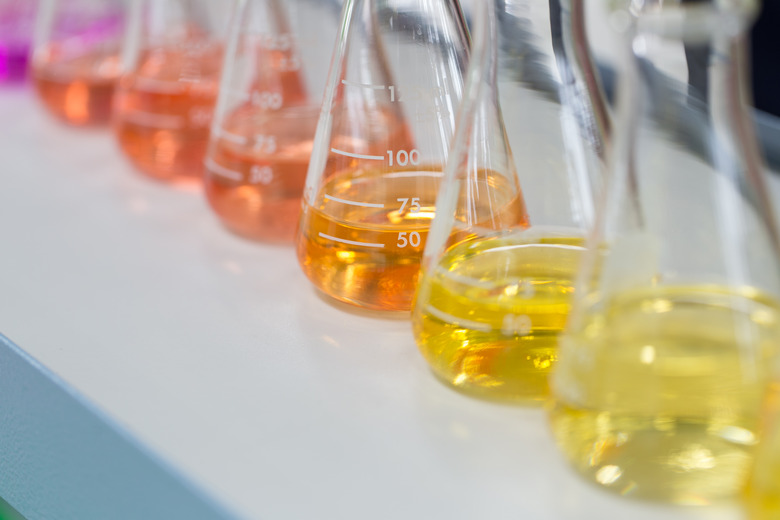The pH of a solution is a measure of the hydrogen ions, or protons, present in that solution. Because acids are proton donors, in everyday terms, you can say that a solution containing a “strong acid” (that is, an acid with a high propensity to donate its protons) is “more acidic.” A solution consisting of a certain concentration of the powerful acid HCl, hydrochloric acid, will be “more acidic” than a solution containing a similar concentration of acetic acid, or plain vinegar. In chemical terms, this is because the pH of hydrochloric acid is lower.
You can write an undissociated acid schematically as HA, or you can write its constituents in solution as H+ (the proton) and A- (the conjugate of the acid). For example, formic acid (found in ant venom) is HCOOH, but its components are H+ and COOH-. Importantly, when this comparatively weak acid dissolves in solution, all three molecules exist in varying proportions. The extent to which any acid gives off protons is the extent to which it is ionized, and this is a function of a property of the acid known as its Ka, which you can find in tables online or in books.
You can calculate the percentage of ionization of an acid given its pH in the following way:
Step 1: Convert pH to [H+]
pH is defined as -log [H+], where [H+] is the concentration of protons in solution in moles per liter, i.e., its molarity.
If, for example, you have a 0.1 M solution of formic acid with a pH of 2.5, you can substitute this value into the pH equation:
2.5 = -log [H+]
[H+] = 1 ÷ 102.5 = 0.00316 M = 3.16 × 10-3 mol/L = 3.16 mmol/L
Step 2: Determine [HA]
For stronger acids, you will need the Ka of the acid to solve the equation:
Ka = [H+][A-] ÷ ([HA] – [H+])
As noted, you can look up the Ka values of a number of common acids in lieu of calculating them explicitly yourself.
But for weak acids, which are present a majority of these problems, [H+] = [A-], and ([HA] – [H+]) is very close to [HA]. Therefore, you simply use the molarity of the solution provided for [HA], which in this case is 0.10.
Step 3: Calculate the Percent Ionization
This is [H+]/[HA] × 100, or for this formic acid solution,
(0.00316 ÷ 0.10) × 100
= 3.16 %

